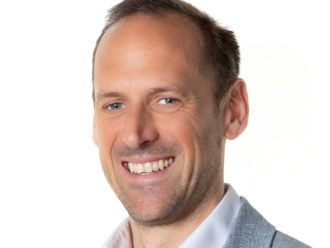By Jens Vanbrabant
When Janet Yellen and Mark Carney accepted their new jobs at the Federal Reserve and the Bank of England, they were fully aware of the poor forecasting track record of their central banks’ research departments. And yet, last week both found themselves on the back foot trying to explain to financial markets the unravelling of carefully crafted forward guidance policies as a result of incorrect unemployment rate forecasts.
Despite the very best intentions, the BoE’s and Fed’s forecasts gave their leaders exactly what they wanted to avoid: speculation about imminent rate rises. It was not just the world’s leading central banks that were on the defensive. Last Monday, the OECD admitted that its repeatedly false assumption that governments would take effective steps to ease the eurozone crisis caused it to make overly optimistic growth forecasts for the region’s economies.
Over 2,500 years ago, the famous Chinese philosopher Lao Tzu stated: “Those who have knowledge, don’t predict. Those who predict, don’t have knowledge”. So why do people persist in making mental and mathematical models that are ultimately incapable of identifying those features of the past that will be replicated in the future? Recently, weather forecasts have become much more accurate thanks to modern technologies, but why has there been no similar improvement in economic forecasts? The answer may be that there are simply too many aspects of economic behaviour that behave randomly and that cannot be modelled.
Is there any point in forecasting? Absolutely. In the absence of a crystal ball, it is the least bad alternative at our disposal to deal with the future. Making predictions allows difficult decisions to be made by providing a (often false) sense of security. What then constitutes “best practice” in terms of forecasting? When we look at the thoughts of some of the world’s most reputable investors, a few basic principles stand out clearly. The founders of value investing, Benjamin Graham and David Dodd, insist that a margin of safety be built in into every investment decision. Whilst a margin of safety doesn’t guarantee a successful decision or investment, it does provide room for error in a forecast. Warren Buffett adopted the same idea as a key tenet of his investment philosophy by coining the term “wide moat” and by insisting on only buying companies with distinct competitive advantages over other firms in their industries.
Nassim Nicholas Taleb, author of the excellent book “Antifragile” offers another insight. He points out a mental bias that makes us notice change, not statics. We notice what varies and changes more than what plays a large role but doesn’t change. As such, when asked to forecast what the world would look like in 25 years, Taleb uses the notion that most technologies that are now 25 years old should be around in another 25 years.
The classical role of the forecaster therefore, is not to look into the future but to analyse the present and suggest sensible actions. As William Osler stated: “The task of man is not to see what lies dimly in the distance, but to do what lies clearly at hand.” The job of pure prediction on the other hand is associated with seers, astrologers and other people involved in divination.
When ECM set the 2014 target returns for its funds in the fourth quarter of last year, we looked at where credit spreads and government bond yields were trading within their 15 year historic range. Our analysis found that credit spreads predominantly traded within the fifth to sixth decile (with the first decile being expensive and the tenth decile cheap).
Armed with the above knowledge and the fact that credit spreads on balance tend to be negatively correlated with GDP growth and with interest rate movements, constructing our portfolios from a duration hedged starting point therefore was eminently sensible.
Jens Vanbrabant is lead portfolio manager at ECM Asset Management




Comments